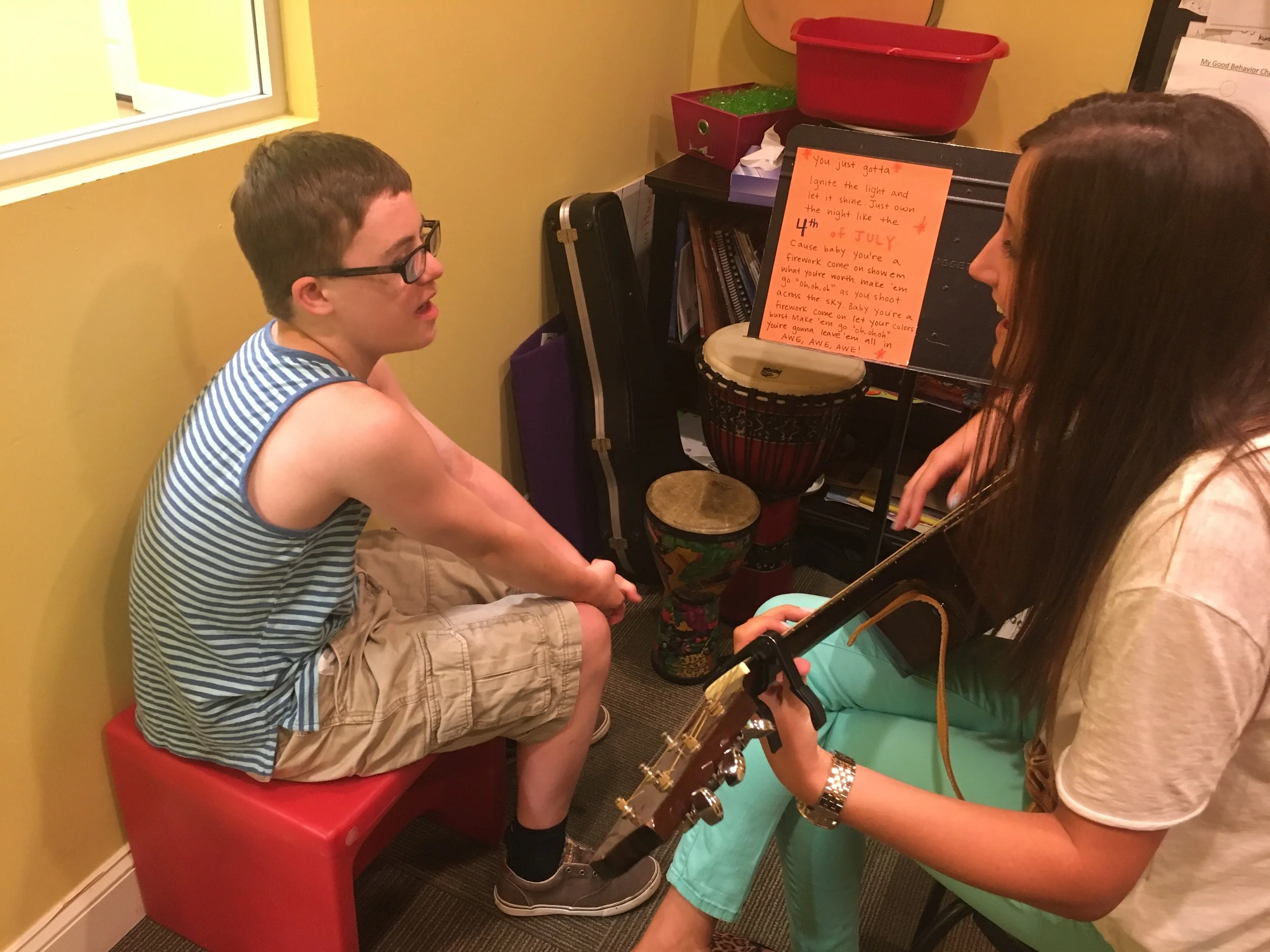Music as an effective tool for improving speech in children with ASD
One of the things that I have really enjoyed about my internship thus far, is having the opportunity to observe other therapies as well. I love that clients and families can come into one building for a convenient one-stop shop and receive occupational, physical, speech and music therapy. It has been really special to witness co-treatments where there are multiple therapists with varying skills working together to help each client make improvements. It also makes me excited for my friends who are also pursuing careers in related therapies and the possibility of us being able to learn from each other in the future.
During my internship, I have noticed that a lot of our clients have difficulties with speech. Speech problems are common in many of our clients’ diagnoses, but are regarded as one of the most significant deficits in autism spectrum disorder. Atypical speech features that are prevalent in children with autism are unusual word choice, pronoun reversal, echolalia, incoherent discourse, unresponsiveness to questions, aberrant prosody and lack of drive to communicate. Not only is this frustrating to family members and friends, but it can be particularly irritating for the client, especially when they want something but cannot express exactly what it is that they want verbally.
This particular research study examined the use of DLSM (Developmental Speech and Language Training Through Music) to address the acquisition of target words in 50 children (ages 3-5) with ASD. There were 3 groups involved: speech training group, music training group and a no training group. For the speech training group, a female student was videotaped reading a story that included the 36 target words and pictures for each word. For the music training group, the same female student was videotaped singing 6 songs that included the same 36 target words and pictures for each word. The same posttest was administered individually to participants in all conditions and all of the posttests were videotaped.
In the results of this study, low functioning participants showed a greater improvement after the music training than the speech training and high functioning participants produced positive changes in verbal production in response to both music and speech training conditions equally. These findings suggest that music provides more predictable temporal patterns than speech does, making it easier to perceive by low-functioning children with ASD. This result indicates that children with ASD are able to transform the information perceived within musical patterns into speech patterns. This suggests that children with ASD have a certain degree of intact perceptual association between music and speech and supports that there is a close integrating relationship between music and language in early childhood development.
“Children with ASD perceive important linguistic information embedded in music stimuli organized by principles of pattern perception and produce the functional speech.”

